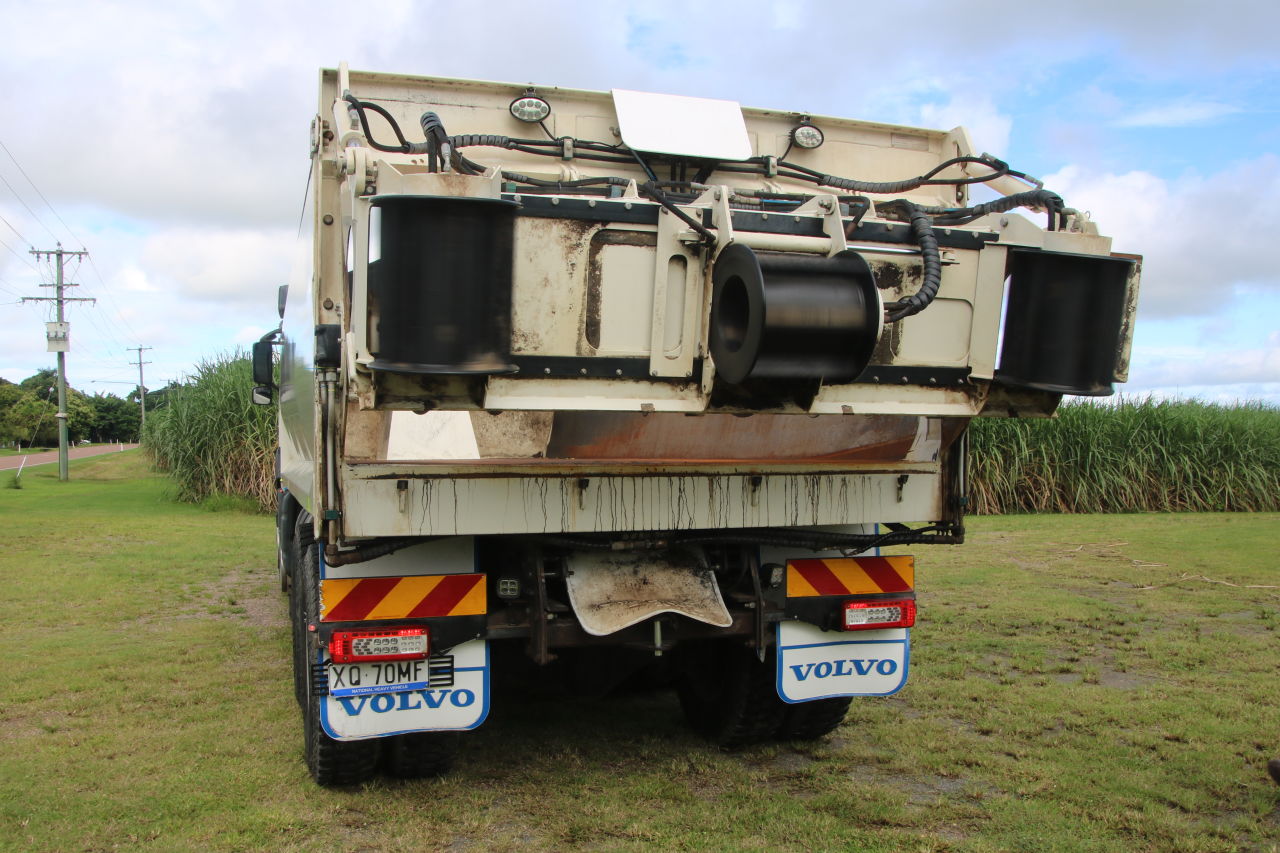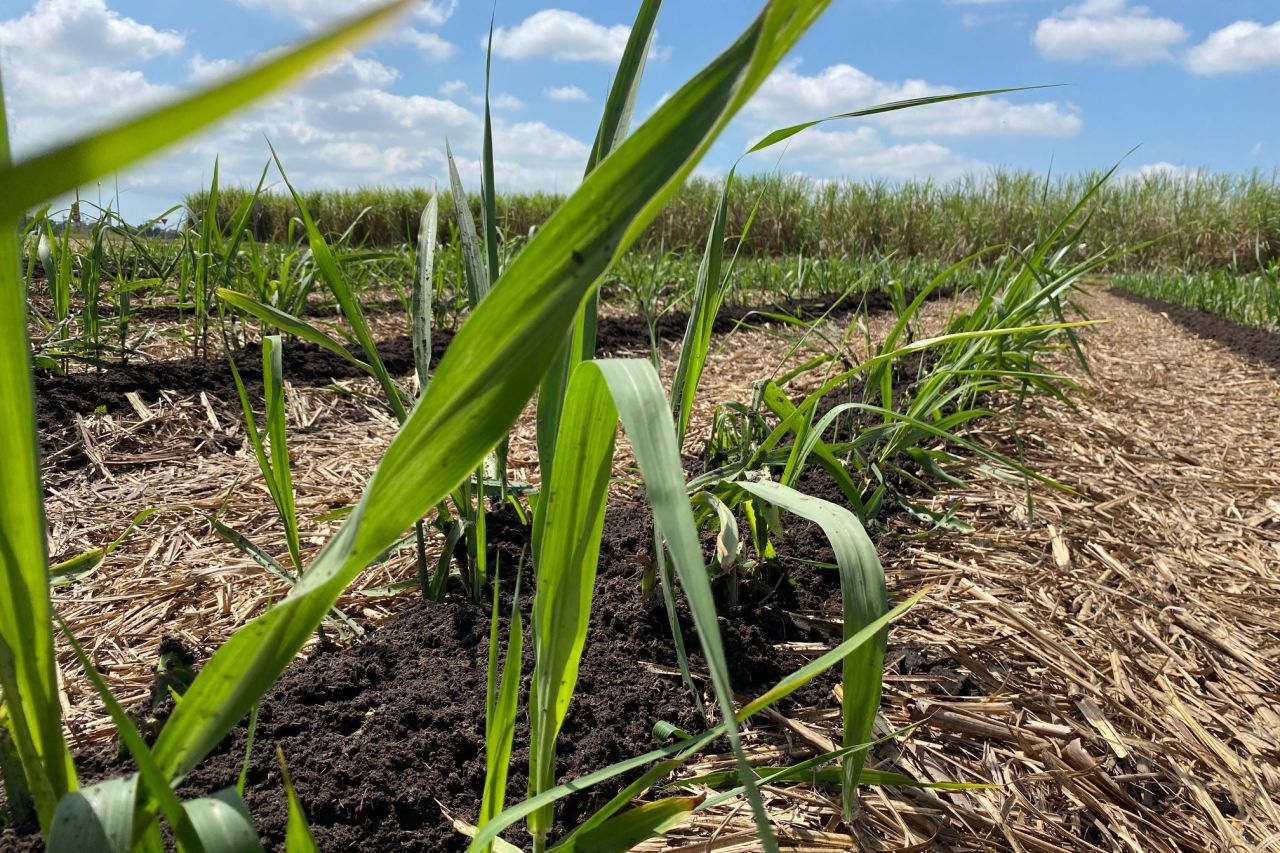Project News ·
Technology changes the way farmers fertilise their cane crops
Herbert region cane farmers are accessing new technology to save money, improve soil health and improve water quality on the Great Barrier Reef.

Australia is the second largest raw sugar exporter in the world. Sugar milling is one of the country’s biggest rural industries producing 35 million tonnes of cane each year, the vast majority of which is grown in Queensland. In north Queensland's Herbert region, sugarcane is grown across 65,000 hectares and is processed through two mills, Victoria and Macknade.
Mill mud is a nutrient-rich by-product of the sugar production process that can be applied to cane fields as organic fertiliser. Research has shown that mill mud can provide a host of benefits. These include higher yields, better soil health and less need to replant due to longer ratoons. After harvest, the underground portion of the cane that is left gives rise to the next crop, which is known as ratoon crop.
Every harvest, sugar mills produce mill mud, which is primarily spread over nearby paddocks with freight subsidies. Because of the high costs of distribution, in 2021 only 6% of mill mud was spread on farms outside of the 30-kilometre radius of the mill. If applied at high rates, mill mud can contribute to elevated levels of nutrients in streams and waterways, which can have adverse effects on fresh water and marine ecosystems.

Left: Vince Trovato followed Tony Crisafulli in using the Agro Goup spinner trucks to apply mill mud to the farm. Right: Ingham cane farmer Tony Crisafulli. Credit: Canegrowers Herbert River.
Funding through the Australian Government’s Reef Trust and the Great Barrier Reef Foundation is supporting technology to better manage nutrient application and maximise the positive impacts of mill mud through the ‘Modernising on-farm mill mud application’ project delivered by Agro Group.
Two prototype mill mud spreading spinner trucks have been developed by this project to achieve reduced on-farm mill mud application rates, accurate and variable placement on the cane and wider regional distribution. The efficient and user-friendly operating system reduces human error to achieve a consistent output for the farmer as required to calculate modified fertilising rates.
Agro Group's Kristen Kernke said that when using mill mud it is important to understand how nutrient rich the product really is and how to use it most efficiently, economically and sustainably. “Because mill mud is high in nutrients like nitrogen and phosphorus, this must be considered when fertilising to ensure the usual inorganic fertiliser rate gets reduced accordingly,” she said.
Farmer Charles Girgenti and Agro Group's Kristen and Regan Kernke.
The current economic climate is driving farmers to think of new ways to reduce costs. Based on agronomic advice, more farmers are applying mill mud and reducing chemical fertiliser rates, which lowers costs and the nutrient losses from the farm.
“Since implementing the new approach, farmers are not only increasing their yields and saving money on fertiliser, but are starting to understand the financial benefits of getting a fourth, fifth or even tenth ratoon out of a cane cycle where they would normally plough out after three viable ratoon cycles
“Farmers are starting to realise that we can’t just keep pulling the organic carbon from the soil; we have to start putting it back if we want to keep farming for generations to come,” said Kristen.

The prototype spinner truck allows for precision application of mill mud for maximum benefit to crop and minimum losses.
Tony Crisafulli has spent his life growing sugarcane at Ingham. He is interested in sustainable farming practices that improve his cane and is willing to participate in trials to see the outcomes for himself.
“When the trials results came back, the most economical approach was using 100 tonnes per hectare application rate of mill mud down below the surface, because the cane tonnes per hectare were up and the sugar content was not much lower. That sold me on using mill mud and now I use it every year as much as I can,” Tony said.
He has been using mill mud with the Agro Group spinner trucks for the last two years. Tony encourages other farmers, “Go ahead and try, if you’re not sure, just trial it on your farm. Split your paddock up, do some with mud and some without and the next year you’ll be using it all over your paddocks.”

Precision placement of mill mud. Credit: Agro Group.
Tony’s neighbour, Vince Trovato has been growing cane in the area since 1953. In 2022, following Tony’s lead, he introduced mill mud on his cane for the first time. He says he has never seen a crop like this year’s cane and is very happy with the results.
“The mill mud has such good nutrients, so you can cut back on fertiliser,” Vince said.
Applying mill mud at lower rates, in more targeted inland locations means there is less nutrient runoff into coastal waterways. Agro Group delivers the product where it is really needed, and more remote farms are now accessing mill mud where it may not have been economical in the past. This benefits the entire sugar farming community.
Kristen said growers are not just using the new technology to save costs on mill mud application. “Growers want to know, and like the fact, that they are also improving the water quality in our region in the process,” said Kristen.
Since 2021, there has been a 15% increase in mill mud application more than 30 kilometres from the mill. Broader and more precise application of mill mud is not only benefiting individual farms but is making a significant contribution to the health of the lower Herbert waterways as well.
#Related

Project News ·
Community at the forefront of Reef water quality protection

Project News ·


